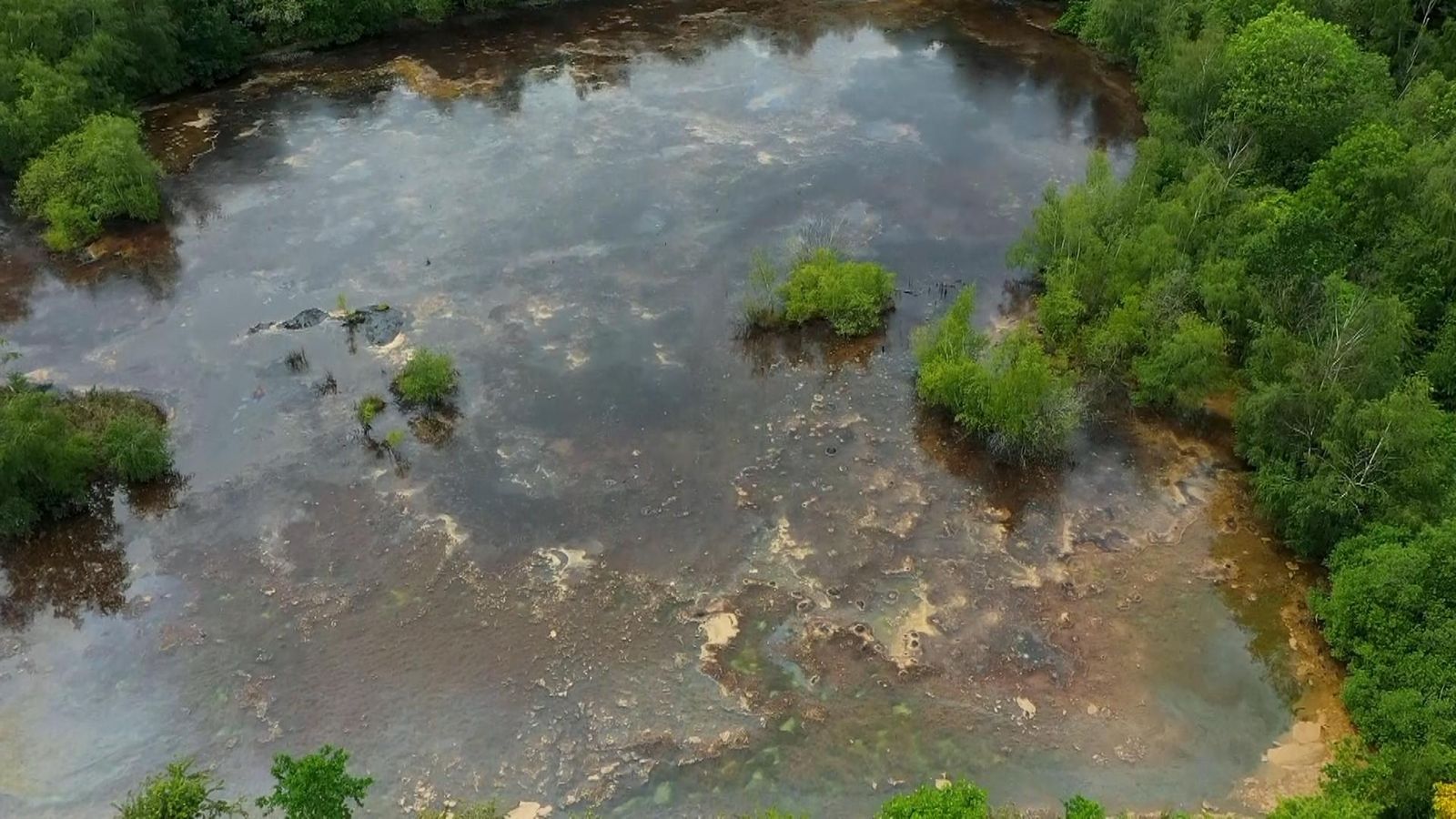Dozens of secret toxic pits near homes across the UK are being ignored by the government.
A Sky News investigation found there are 34 Acid Tar Lagoons officially recorded by councils across the UK, but the government has a record of only two in England.
Acid tar lagoons are extremely hazardous, corrosive swamps made up of unmanaged dumped mess from oil refineries largely in the 1960s and ’70s.
Disused quarries across the country were allowed to be filled up with thousands of tonnes of poisonous gunge and their impact today is detrimental on the environment, controlled waters, and in some instances, public health.
Sky News was taken to a hazardous site near Chester after being contacted by local councillor Matt Bryan who wanted to highlight the pits and the blight on his constituency.
The pit at Hoole Bank contains 60,000 tonnes of toxic waste and has been sat bubbling away for decades.
Matt Bryan said: “It’s a toxic waste dump, it’s absolutely vile to be around here. There’s nothing living in here, anything that’s close to being alive is covered in oil and tar and it’s just a generally disgusting place to be.
“The smell is awful and there’s oil leaching out into the ground around us.”
The Hoole Bank pit is less than 100 yards away from homes. Residents nearby are concerned and worried about the impact of these dormant sites.
One told us: “I’ve lived here for four years, and I don’t know much about it apart from the fact it’s just down the road, that’s not good at all. I’ve got kids and the environment and health for the kids obviously isn’t good. It’ll be good to get rid of it.”
Another local resident hadn’t heard about the acid tar lagoon, she told us: “I had no idea that it was here. It’s a huge worry that you’re not told about them or made aware of it. It’s almost like it’s trying to be hidden.”
Historical data from the Environment Agency suggests this particular lagoon is not classed as hazardous, but after testing its properties it showed PH levels of 1 to 2; it is a highly acidic material and this is similar in many sites across the country.
Dr Will Meredith is an environmental scientist from the University of Nottingham and specialises in petrochemicals.
He said: “It’s obviously very damaging locally from an environmental perspective, certainly from a wildlife one.
“It’s so acidic that things can’t grow on it without assistance and also if people come into contact with it you can get burns, corrosion, damage. These legacy sites are as a result of poorer environmental standards in the past.”
Many of the sites we identified are in the North of England, with 18 recorded across Northern Ireland.
Having poisoned the environment for decades, cleaning them up will now cost millions of pounds and some of the sites are so toxic there are no facilities in Europe large enough to decontaminate them.
Many of the companies who once owned the land and dumped the waste are long gone and now no one is taking responsibility.
At another site in Derbyshire, Dr Harvey Wood, who has been investigating acid tar lagoons for a number of years, has found a solution that works.
The Cinderhill site was a hazardous pit with thousands of tonnes of toxic waste dumped, but Dr Wood from the Clean Rivers Trust has found a cheaper and very natural process which means the waste has been neutralised.
He said: “We wanted to plant willows on this site because we know willows like acidic conditions. We covered the tar with a layer of spent mushroom compost, we then planted the willows and they’ve rooted into the tar down 18 inches to two feet and now that is no longer acid.”
Dr Wood hopes this new process can be used across the country at other hazardous lagoons.
Responding to the investigation, the Environment Agency said: “The identification of these sites sits with local authorities – however when asked, we will work collaboratively to inspect the land to ensure risks to the environment are understood and the area remains safe.
“We have also published technical guidance on waste acid tars to ensure these sites can be managed in a way which limits impact on the environment and surrounding areas.”






















